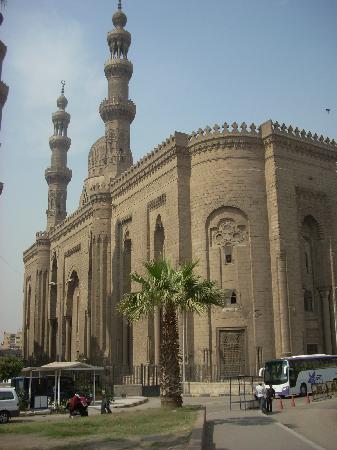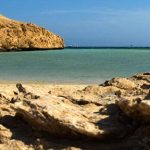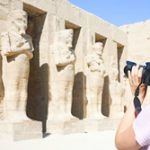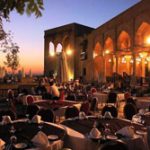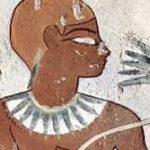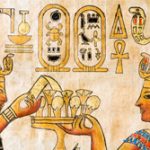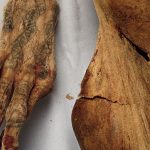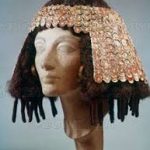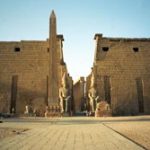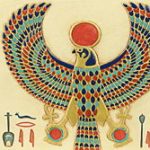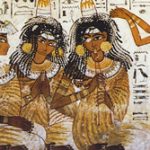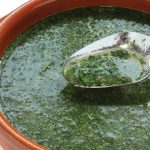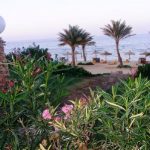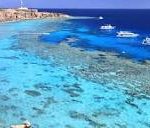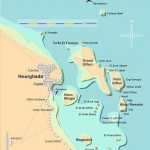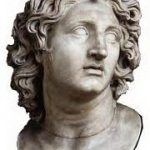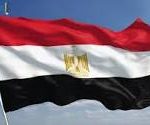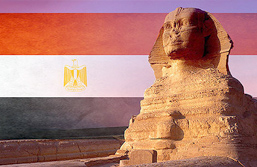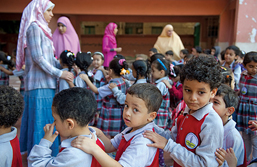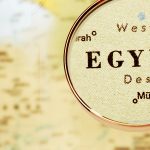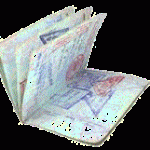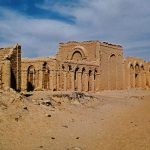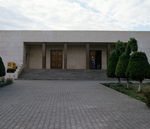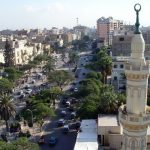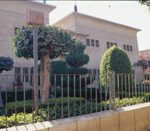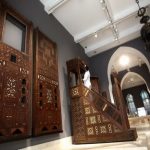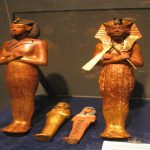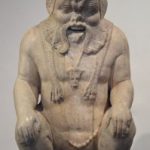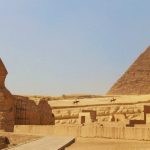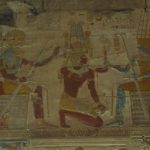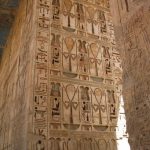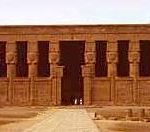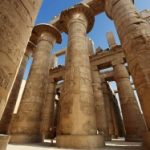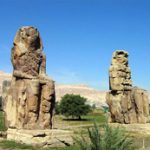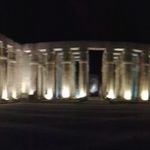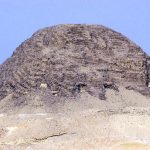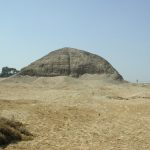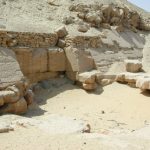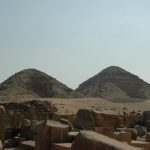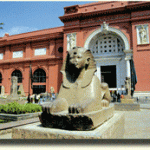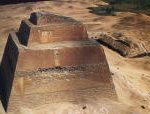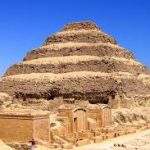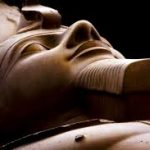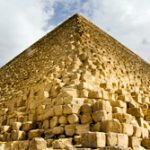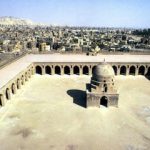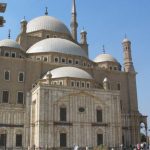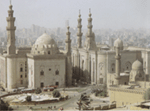The mosque of Al Refaie’ is considered one of the most remarkable Islamic structures in all of Cairo. The mosque is located in the Qala’a which is situated right in front of the citadel, just facing the great Mosque of Al Sultan Hassan. The Refaie Mosque was embellished by Khoshiar, the mother of Khedive Ismail, to be the grand mausoleum of the royal family.

Nobody knows why exactly Khoshiar chooses that location to build the mosque. It may have been because she wanted to build a mosque that rivaled that of Al Sultan Hassan in its size and greatness. She wanted to renew the Zawiya of Al Refaie so she bought up all the land around it and then she destroyed the Zawiya completely and started to build this new grandiose mosque.
The mosque was built directly on the site of an older mosque called mosque of “Al Zakhira” which was built in the Ayubids era and it contained the dooms (superstious burial tombs) of many Islamic Imams and religious people.
Although the mosque of Al Refaie is named after Sheikh Ahmed Al Refaie, the Sufi leader of the Al Refaieya method, he was never buried there or in Egypt at all. However, the Zawiya continued to honor of Al Refaie and later an ancestor of Al Refaie, Sheikh Abu Shebak was buried in the mosque.
The most famous Egyptian builder at the time, Hussein Fahmy Pasha, designed this new mosque to contain the tombs of the royal family. He also added two domes for Ali Abu Shebak and Yehia Al Ansary, two sheiks that were buried there.
However, in 1881 the building work stopped due to design changes and then was completed for good with the death of the mosque creator, Khoshiar Hanem in 1885, and she was buried within her own design.
Twenty-five years later, when Abbas Helmy the Second became ruler of Egypt, he ordered Hatz Pasha, the director of the association of Egyptian Antiquities at the time, to continue building the mosque.
The mosque was first opened for public on a Friday, in 1912.
The Mosque of Al Refaie featured striking, immense entrance gates with tall columns made of rock and marble adorned with rich Arabic decorations. The builders of the mosque didn’t want it to be outshone by its larger neighbors.
The mosque from inside has a rectangular shape with the area of 7500. 1767 meters were constructed only for praying and the rest was built as a mausoleum.
The main gate of the mosque is located the western side and atop the gate lies a dome decorated with gold. As you enter, there is a door that leads to the tombs of Abu Shebak and Ali Al Ansari.
Beautiful colored marbles decorate the majority of the walls of the Mosque. They were imported from seven countries spanning the globe. The walls, doors, and windows of the mosque are richly decorated with Abanos wood and radiant golden ornaments.
The Mihrab of the Mosque is located inside its eastern walls and it is clothed with colored marble and features four marble columns. There are five colored lines drawn inside the Mihrab and some of them contain the same radiant golden ornaments.
Beside the Mihrab, there is the fascinating Minbar which was decorated with ivory, ebony, and mother of pearl. It has a quite unique style as it was made in the Mamluk way. The small door of the Minbar is rich with wooden decorations. The treasure trove of design elements within the mosque is second to none.
One of the most remarkable items in the mosque is its pure white alabaster Dekka , known as the place of the prayer caller. It is unique in its design and decorations and there is absolutely nothing like it in all of Egypt. It is built on eight white marble columns and contains some stunning Quran inscriptions, written in pure gold.
Onthe northern side of the mosque, there are six gates. Four of them lead to the burial rooms of the ancient kings, queens, and many of their royal ancestors.
The first of these rooms contain the tombs of four of the Khedive Tawfik sons and daughters: Wahida who died in 1858, Zeinab who died in 1875, Ali Gamal El-din who died in 1893, and Ibrahim Helmy who died in 1926. There is a beautiful small dome above this room which is also decorated with Quranic inscriptions.
If you venture to the west, there is another room where Khedive Ismail and his mother, Khoshiar Hanem, were buried.
Afterward, you will find a room where the daughters of Khedive and the wives of Ismail have been laid to rest: Shohrat Vasa who died in 1895, Gianyar who died in 1912, and Gushm Afet who died in 1907.
From this room, there is a door that leads to the room where Sultan Hussein Kamal, the son of Ismail who ruled Egypt in 1914 and died in 1917 (and was followed by his brother the Kind Farouk), is entombed.
The Shah of Iran, Mohamed Reda Bahlawy, the former husband of Queen Fawzeya, was also buried in the Mosque of Al Refaie, but his is an interesting tale. The Islamic revolution in Iran led to his exile. He couldn’t find a place to hide out until the former Egyptian president Anwar El Sadat welcomed him in Egypt and when he died, Al Saddat ordered that he should be buried in the Mosque of Al Refaie. His tomb room is one of the most amazing in the mosque, it is all beautiful marble floor and walls. For reasons unknown, the father of the Shah was buried for some time in the same room.
Besides the room of the Iranian Shah, there is the burial room of King Foaud (1868- 1936). In the eastern wall of this room, there is a door that leads to the tomb of King Farouk who died in Rome in 1965, not that long ago is it?
King Farouk wanted to be buried in the Mosque of Al Refaie beside his family and relatives. However, the former Egyptian president at the time, Gamal Abdel Nasser, refused his last request. Heallowed for King Farouk to be buried in Cairo but not in the Mosque of Al Refaie. However, in 1970, when President Nasser passed away, the body of King Farouk was transferred to the Mosque of Al Refei where he belonged.

